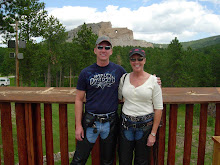As all my games (Field of Battle, Field of Battle, various Piquet supplements) have cards in them - I'm undeniably hooked on the randomization and characterization capabilities in a deck of cards. As such, the cards have to go someplace during the game.
I'd previously used a double wide business card holder. The unused portion of the deck was on the left, and the discard pile was on the right. It worked "ok", but players had difficulty in grabbing the cards, and cards ended up on the tabletop playing surface. Egad! That is one way to ugly up a game in a hurry.....there had to be a solution.
And there you have it - my solution! Its actually quite simple, and I'm embarassed that it took me so long to come up with a decent device to hold the cards. As you can see in the photo above, the card holder is just some oak 1x4 for the base, with 1/4" x 1 1/2" oak for the section dividers. I chose oak finished with spray satin finish rather than a painted soft wood for a couple of reasons. First - the oak just looks good! Secondly and more importantly for game play, the satin finish on the oak lets the cards slide on and off the surface very easily and avoid the sticking that is possible on a painted surface.

The 1/4" thick dividers are just glued to the 1x4 base. The oak was sanded, stained and then spray finished. I used an old woodworker's trick to get a very smooth finish - after each layer of spray finish (I used 4 coats), I rubbed down ("sanded") the oak surface with a folded piece of regular paper (printer paper). Paper has an extremely fine abrasive quality, and it knocks off the imperfections and roughness without messing with the stained finish. The end result is a very consistent and smooth surface that the cards just glide over.
The unused card deck is placed on the left. As cards are revealed, they are placed in the center section. This makes it easy to count how many cards have been played, and keeps them off the table. After the side's initiative is complete, the played cards are gathered and placed on the right discard section (face up). Easy as can be!
Of course, this solution may not be for everyone. I have a custom built game table with a tray built into the perimeter to hold stuff during a game. The initiative card holders fit in the tray nice and tight, and keep the game table looking good and mess free.

























